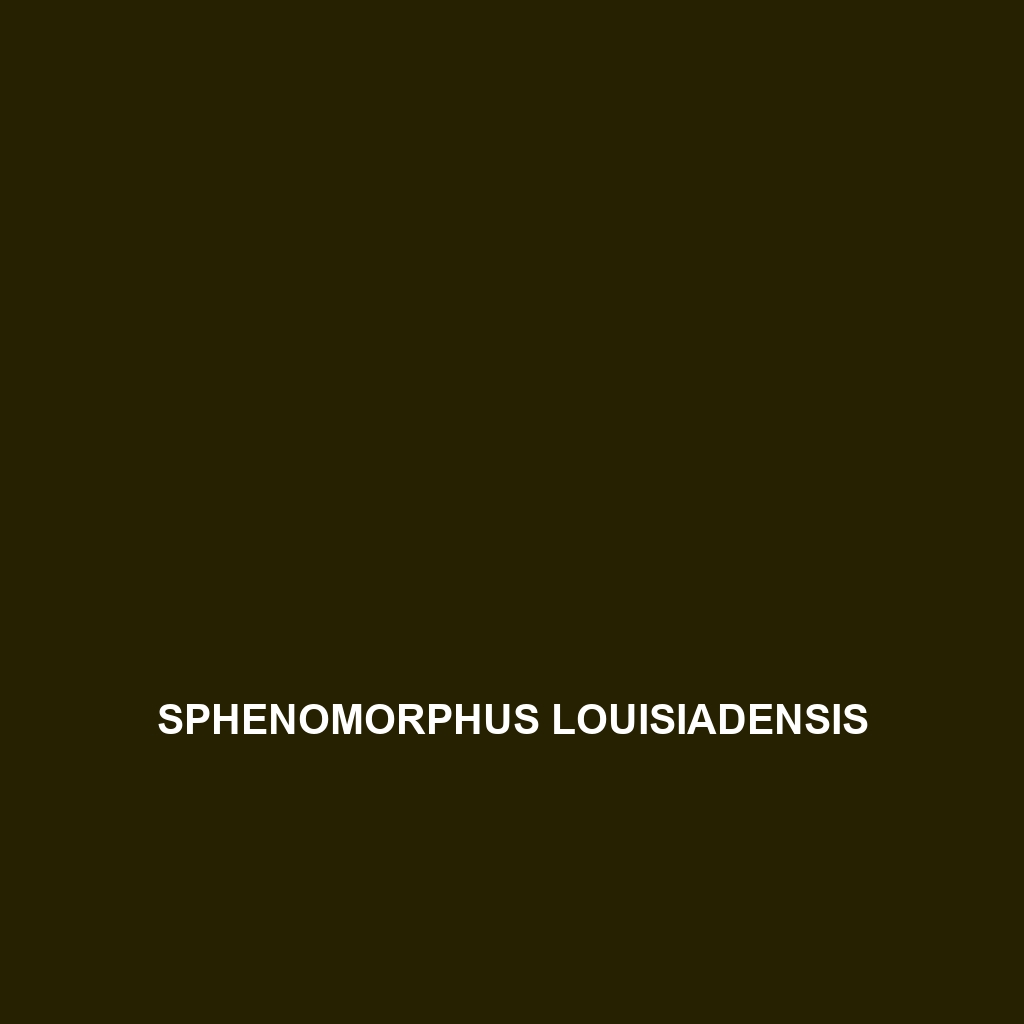Introducing the Sphenomorphus louisiadensis, or Louisade skink, a medium-sized lizard native to the Southwest Pacific's humid environments. Known for its sleek body with distinct stripes, this carnivorous species plays a crucial ecological role by controlling insect populations and serves as both predator and prey in its vibrant habitat.
Tag: biodiversity in ecosystems
Sphaerodactylus ruibali
Discover the unique Sphaerodactylus ruibali, a small nocturnal lizard native to Caribbean rainforests, thriving in humid environments. With its slender body, distinctive camouflage, and vital role in the ecosystem, this insectivorous species is both fascinating and essential for maintaining biodiversity.
Sphaerodactylus plummeri
<b>Sphaerodactylus plummeri</b>, also known as Plummer's gecko, is a small, nocturnal gecko native to the Caribbean, particularly the Virgin Islands. Measuring 3 to 4 inches, it thrives in tropical habitats, primarily feeding on insects while playing a vital role in maintaining ecosystem balance.
Sphaerodactylus nicholsi
<p><b>Sphaerodactylus nicholsi</b>, commonly known as Nichols' pygmy gecko, is a small, nocturnal lizard native to tropical habitats like rainforests and savannas in the Caribbean. Measuring 4-5 inches, it features a slender body with smooth, shiny scales and specialized toe pads, primarily feeding on small insects while playing a crucial role in controlling insect populations in its ecosystem.</p>
Sphaerodactylus intermedius
<b>Sphaerodactylus intermedius</b>, also known as the intermediate spherical-toed gecko, is a tropical insectivore found in the Caribbean, characterized by its slender body measuring 4-6 inches, distinctive banding for camouflage, and nocturnal behavior. This species plays a crucial role in controlling insect populations and contributes to the biodiversity of its rainforest and coastal savanna habitats.
Sphaerodactylus darlingtoni
<b>Sphaerodactylus darlingtoni</b>, commonly found in the tropical rainforests of Puerto Rico, is a small nocturnal lizard measuring 6 to 10 cm, known for its ability to blend with the forest floor and its essential role in controlling insect populations. With remarkable adaptations, including enlarged toe pads for climbing and a regenerative tail, this species plays a vital role in its ecosystem while contributing to biodiversity.
Simalia tracyae
<p><b>Simalia tracyae</b>, also known as the Tracya's python, is a striking snake species found in tropical rainforests and coastal areas of the Indo-Pacific, reaching lengths of up to 4 meters. With its unique yellow and black banding and primarily nocturnal lifestyle, it plays a vital role as a predator in maintaining ecosystem balance.</p>
Siderolamprus bivittatus
Siderolamprus bivittatus, commonly known as the two-banded skink, thrives in humid tropical rainforests and savannas across Central and South America. With its distinctive smooth body featuring two prominent stripes and a diet primarily of insects, this agile skink plays a crucial role in regulating insect populations while exhibiting unique behaviors such as tail regeneration for defense.
Ptyodactylus ruusaljibalicus
<p><b>Ptyodactylus ruusaljibalicus</b> is a medium-sized lizard native to the Mediterranean region, thriving in diverse habitats from scrublands to temperate forests. This insectivorous species features a distinctive elongated body, remarkable color-changing ability, and engages in fascinating mating displays, playing a crucial role in maintaining ecological balance.</p>
Pseudotrapelus neumanni
<p><b>Pseudotrapelus neumanni</b>, also known as Neumann's lizard, is a diurnal insectivore native to arid regions of North Africa, characterized by its streamlined body, vibrant blue throat in males during mating, and remarkable adaptability to harsh climates. With a diet primarily consisting of insects and a vital role in controlling populations, this species is crucial for maintaining ecological balance.</p>









